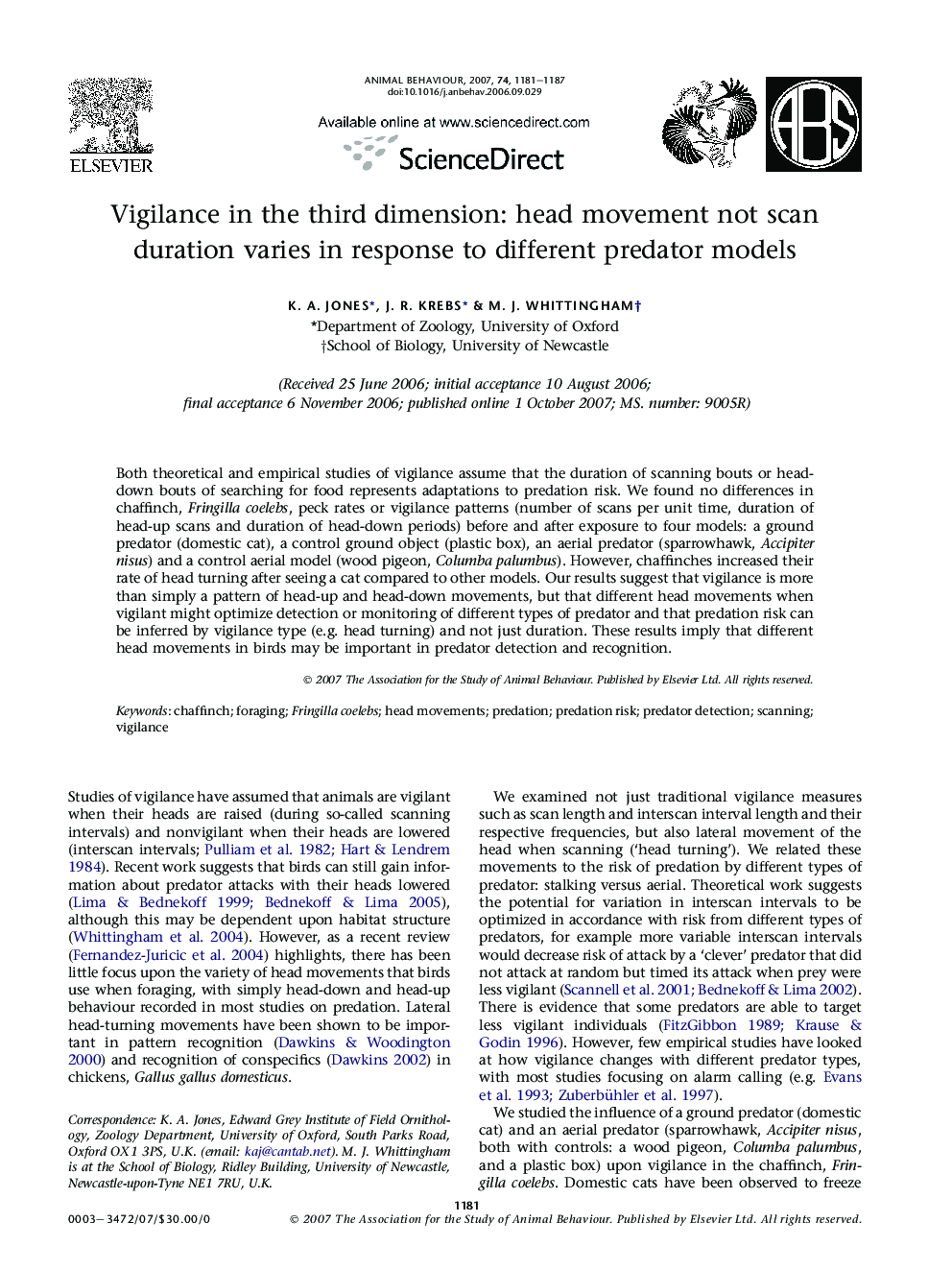| Article ID | Journal | Published Year | Pages | File Type |
|---|---|---|---|---|
| 2418272 | Animal Behaviour | 2007 | 7 Pages |
Both theoretical and empirical studies of vigilance assume that the duration of scanning bouts or head-down bouts of searching for food represents adaptations to predation risk. We found no differences in chaffinch, Fringilla coelebs, peck rates or vigilance patterns (number of scans per unit time, duration of head-up scans and duration of head-down periods) before and after exposure to four models: a ground predator (domestic cat), a control ground object (plastic box), an aerial predator (sparrowhawk, Accipiter nisus) and a control aerial model (wood pigeon, Columba palumbus). However, chaffinches increased their rate of head turning after seeing a cat compared to other models. Our results suggest that vigilance is more than simply a pattern of head-up and head-down movements, but that different head movements when vigilant might optimize detection or monitoring of different types of predator and that predation risk can be inferred by vigilance type (e.g. head turning) and not just duration. These results imply that different head movements in birds may be important in predator detection and recognition.
